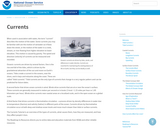
This tutorial gives a comprehensive overview of currents.
- Provider:
- National Oceanic and Atmospheric Administration
- Author:
- NOAA
- Date Added:
- 06/24/2019

This tutorial gives a comprehensive overview of currents.

Students will examine and discuss how speed affects the ability of a current to transport sediment or sand, and then apply information from the demonstrations to the problem of working in underwater submersibles around undersea landforms. This curriculum guide provides background information and a lesson outline related to the effects topography of the ocean floor has on ocean current speed.

In this activity, students explore the differences between upwelling and downwelling. Students will study graphics and photographs illustrating the two processes and then answer questions about each. Students will also analyze maps to understand where and how upwelling and downwelling occur.

David Gallo take us on a voyage into the ocean, specifically how and why we explore deep ocean environments. Discussion/assessment questions and suggested supplemental resources are included.

With this resource, students discuss how they and other organisms adapt to survive in different environments. They discover the characteristics of deep sea extremophiles that help those organisms survive in several deep sea ecosystems.
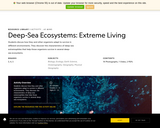
Students apply the language of location to places on a map of Europe.

In North Carolina, six types of habitats have been identified as playing a crucial role in the production of North Carolina's coastal fisheries resources. The North Carolina Department of Environment and Natural Resources have deemed these habitats important for protection and enhancement. In this activity students will examine these six habitats along with three additional ones by learning about their location in the estuary, their function and how they differ from the other habitats.

Students will be inspired by James Cameron's historic DEEPSEA CHALLENGE dive to investigate pressure and use the engineering process to design, model, test, document, evaluate, and re-design a submersible vehicle.

In this activity students will learn about the many factors, both man-made and natural, that affect fish populations in the estuary. By learning how humans have a negative influence on estuarine fish populations, students will learn how to become better stewards of the environment.
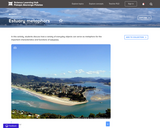
Students discuss how a variety of everyday objects can serve as metaphors for the important characteristics and functions of estuaries.
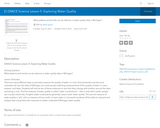
There are many different ways to precisely measure the quality of water in a river. Environmental scientists and volunteers all over the state of Michigan are continuously collecting measurements of the quality of water in rivers, streams, and lakes. Students will look at two of these measures to see how they change with location around the state and along a river. The first measure of water quality is called "water conductance" - that is, how well a water sample can conduct electricity. A higher water conductance generally means lower water quality. The second measure of water quality is "pH." pH is a measure of how acidic or basic water is. Successful students will be able to interpret and analyze data using these two measures to better understand Michigan water quality.

Students will describe at least two ways in which current flow may affect food capture by particle-feeding organisms.

In this lesson, students illustrate the value of wetlands as a nursery for young organisms, show the value of wetlands in controlling erosion and retaining water, and demonstrate the role of wetlands in absorbing/filtering pollutants and excess nutrients.
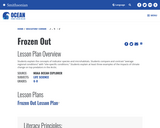
Students will read scientific text about top predators in Arctic marine ecosystems and how they may be affected by global climate change. Students will work individually or collaboratively to write a report based on the scientific text they have read and participate in a large-group discussion session based on their analysis.

Students use maps to learn about ocean currents, research case studies about oil spills, and discuss the role of oceanographers.

This activity is designed to show students how spat or oyster larvae rely on a hard substrate for survival. Students will also learn the importance of oysters to an estuary and how recycling oyster shells helps the oyster population.
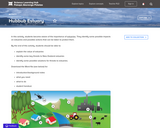
Students become aware of the importance of estuaries. They identify some possible impacts on estuaries and possible actions that can be taken to protect them.

In this activity, students construct a coastal landmass from sand and add features such as tidal creeks and barrier islands. Students then add varying amounts of water to observe the effects of storm surge on coastal land masses.

Students explore interactives to learn about hydrothermal vent chemistry and the animals that have adapted to living in the harsh environment near vents.

Students will make a food diagram of the hydrothermal vent community and show the flow of energy and materials in this ecosystem.